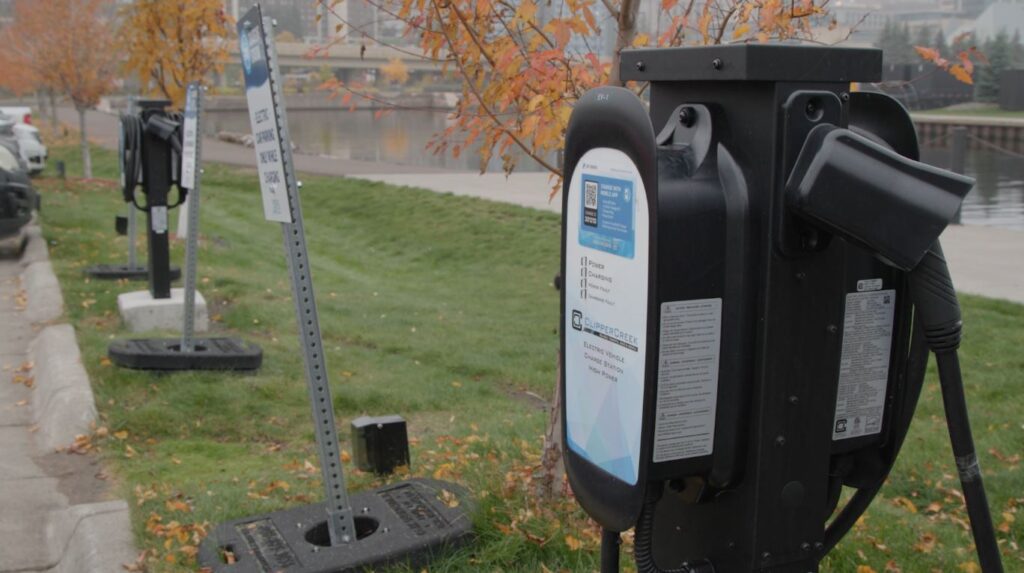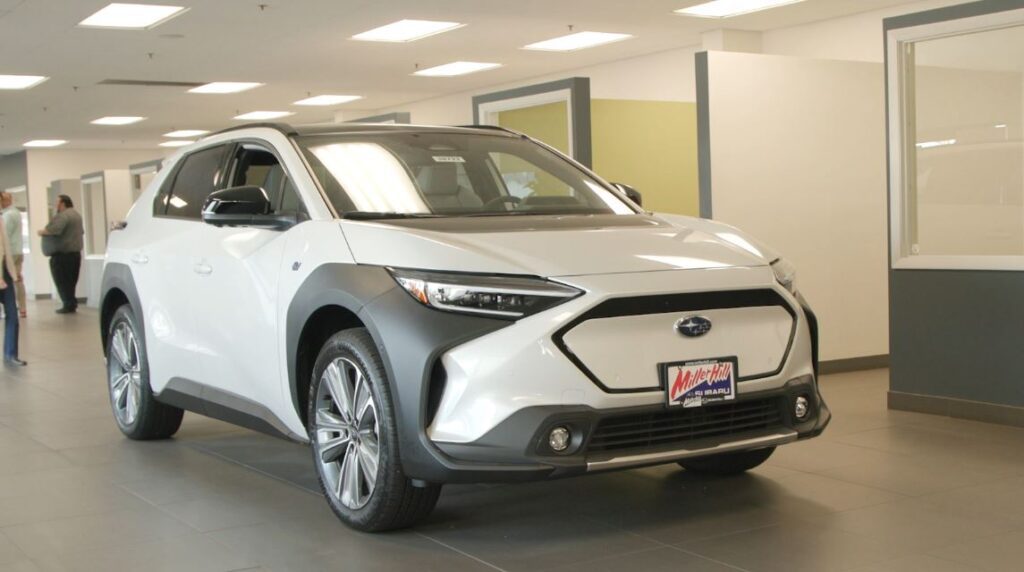Exploring EVs: Considerations for Northlanders before you buy
Everything in Steve Sandberg’s driveway is electric. He has both a Tesla Model Y and Chevy Bolt. Before these, he also had a BMW i3. So now, he’s accustomed to driving electric vehicles. But there was an adjustment.
“I think there is definitely a mind shift with owning an electric vehicle,” Sandberg said.
Not only do he and his family use them for driving to and from work and school but also on longer trips to the Twin Cities.
“There are about 3-4 charging stations between here and there,” he said. “The CCS charger for the Chevy Bolt, there are two of them between here and the Cities. And that is – right now that network is less reliable than the Tesla network. The Tesla network is very reliable and very fast.”
Finding chargers can be a challenge. But it’s getting easier. Minnesota Power donated one to Pier B for guests to use during their stay. Pier B liked it so much they bought another.

With EVs, miles per hour isn’t just about speed but speed of charging.
“For at-home charging, what you’ll see is a couple different options,” Jon Sullivan, Minnesota Power customer programs and services representative lead, said. “The Level 1 charger, which is a regular outlet, is a great option for a lot of people.”
Sullivan said a Level 1 charger provides around 3-5 miles per hour of charging. Overnight, that could translate to 30-50 miles of range.
“And according to Kelly Blue Book, the average EV owner or any owner of a vehicle drives about 37 miles per day. So a regular outlet is more than likely more often the best option for people,” he said. “However, a lot of people love Level 2s at home.”
Level 2 chargers provide more like 20 miles of range per hour or around 200 overnight. That’s what Sandberg opted for. He also has solar panels to offset costs.
Local electricians estimated it would cost between $1,000-2,500 to install a Level 2 charger in a garage. And dealerships say EV drivers may want a second meter to get Minnesota Power’s off-peak EV service rate, which can be as low as $.03 per kilowatt hour.
“About 37 miles is about the average for an average person driving. So if you look at that over a 30-day period, with our regular residential rate, that’s about $58 per month,” Sullivan said. “If your vehicle gets about 20 miles per gallon with the average cost of gas right now, that same distance would cost about $180-190.”
Find Minnesota Power’s electric vehicle information here
The economic efficiency is attractive. That’s part of why Pete Stone at Miller Hill Subaru says they have a few people in every day asking what’s available. They have a fully electric Solterra available starting with the 2023 model year.

There are a few features to put in the “pro” column.
“The EVs tend to have less maintenance,” Stone said. “There’s no gas engine in it, there’s no complicated geared transmission or a clutch or any of the things you might be maintaining in a normal vehicle. This car doesn’t have that.”
On the potential “con” list is quicker wear and tear on the tires because EVs are heavier than gas-powered cars.
Sandberg says his handle fine in the snow, especially with snow tires. But he’s found there will be a decrease in battery range in the cold months.
“Battery capacity does decrease approximately 50 percent. So now I’m at 150 miles for my Tesla and about 130 miles for my Bolt,” Sandberg said. “Driving around town, that’s not a concern. But if I’m driving to the Cities, I now may have to stop and charge down and back upwards of twice on the way down possibly.”
One of the big differences a new EV driver may notice is at the start. When the engine comes to life, there isn’t a felt sensation like a traditional vehicle. They can also be driven with just one pedal.
“I don’t use the brake that much. So this has regenerative braking,” Sandberg said. “If I need to use the brake, obviously that is there. But by and large, like if I come up to a stop sign, I just take my foot off of the accelerator. And that will then slow down.”
It also regenerates the battery.
Broadly, the consensus among Sandberg, Sullivan, and Stone is that electric vehicles are a viable option in the Northland.
“There’s really little to no drawback,” Sandberg said.
“I talk to many, many EV owners that live in our region. And I don’t know if any have said that they don’t work,” Sullivan said. “They all really love it.”
Stone says drivers should treat it like any car purchase, making sure it has the features that fulfill what they need. Sullivan agreed.
“The realistic approach is how much are you driving per day, are you traveling a lot, do you have the right kind of charging equipment at home?” he said. “Because if you do, even with maybe the impacts of cold weather, EV ownership is still very feasible and great in northern Minnesota.”